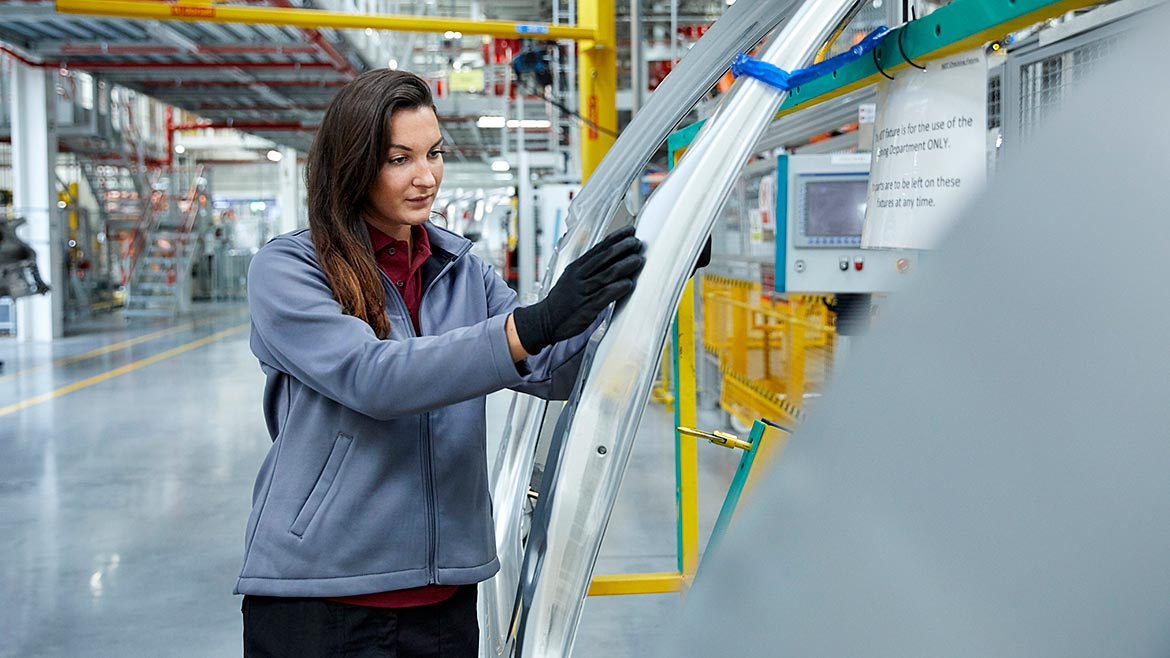Management
Quality is Necessary But Not Sufficient
Manufacturers must pay attention to far more than quality.

Image Source: Morsa Images / E+ / Getty Images Plus
Quality magazine focuses on quality technology, including measurement and gaging equipment. This has been the historic focus of the quality profession, but it is important to recognize that quality—conformance to the customer’s requirements and fitness for the customer’s purpose—is merely the price of admission to the marketplace. Rapid and reliable delivery, and especially low prices, are what win market share. They are achieved by removing all forms of waste, of which poor quality is but one, from the supply chain.
Poor quality is only one of the Toyota Production System’s Seven Wastes, and it is rarely the most costly one. This is because, first of all, poor quality is usually expressed in fractions of a percentage. The other wastes are generally built into the job and are present 100 percent of the time. They are also usually asymptomatic, i.e. they do nothing to announce their presence. Defects and nonconformances, on the other hand, stand up and proclaim, “Here we are, come and find our root causes,” which any good corrective and preventive action (CAPA) process will do. I recommend the Automotive Industry Action Group’s CQI-20, Effective Problem Solving, as the best in existence for this purpose.
How do we address all forms of waste? Henry Ford defined three wastes that encompass all of Toyota’s and more. “Time, energy, and material are worth more than money, because they cannot be purchased by money. Not one hour of yesterday, nor one hour of today can be bought back. Not one ounce of energy can be bought back. Material wasted, is wasted beyond recovery” [1]. We can expand waste of time to encompass the time of things (e.g. cycle time) and the time of people, as lost through waste motion. Anything we throw away is wasted material regardless of whether it is an environmental aspect as defined by ISO 14001:2015, and wasted energy can be addressed by ISO 50001:2018. The workforce can learn all four wastes—time of things, time of people, material, and energy—very quickly and will then be able to identify them on sight. Ford relied on his front-line workers to find most of the waste in his factories, and to the extent that metal cuttings on the shop floor—something taken for granted in most machine shops—attracted rapid attention.
Cost of Foregone Opportunities
However, we must also pay attention to opportunity costs, i.e. the unseen costs of failure to pursue an opportunity. These are invisible to cost accounting systems because we cannot deduct them on our tax returns. Henry Ford [2] wrote of this, “If a device would save in time just 10 percent or increase results 10 percent, then its absence is always a 10 percent tax.”
I recall an anecdote, although I cannot find the reference, about a wood carver who had spent his life in this trade and was renowned for his skill. He crafted a walking stick with meticulous care over the course of weeks or even a month. The finished product was a superb masterpiece of the highest quality, and a wealthy customer paid a good price for it. The wood carver remained poor, however, because he could not make many walking sticks by hand, while only the rich could afford his work.
Then the invention of the Blanchard Lathe in the early nineteenth century enabled mechanical replication of the wood carver’s skill [3]. “Legend has it that during one of Blanchard’s visits to Springfield Armory at this time a musket stock maker, who carved the wooden gun stock, was heard to express that a machine could not be invented to replicate his skill at shaping wood. In a short time, Blanchard realized that he could produce just such a machine.” This machine tool can make pretty much anything from a roughly cylindrical piece of stock such as a shoe last, an axe handle, and presumably a walking stick. The result would have been that our master wood carver could now make dozens of walking sticks in the time previously required for one, sell them for much less, and earn far more money.
Replication of woodcarvings is but one application of modern technology. The stereotype of the “starving artist” probably originates from the fact that only the best artists can sell their work for five-figure and even six-figure amounts in today’s money. The painter faces the same problem as the wood carver; he or she cannot produce by hand enough pieces to sell at sufficiently low prices to those who can afford them. Now, however, “Advances in laser scanning”—another application of quality technology—“have transformed how museums research and conserve paintings by mapping the textures, colors and dimensions of their surfaces in minute detail” [4]. This enables, in turn, replication of a painting in terms of not only colors and hues, but also textures.
Prior to about 1440, meanwhile, books had to be copied by hand. “Clerk,” in fact, comes from “cleric,” as clergymen did most of the copying. There was no problem with the quality of the hand-copied books, and many clerics even turned their products into beautiful works of art. The clerics who hand-copied medieval books had usually taken vows of poverty and received no compensation at all, other than room and board in monasteries—but books were still astronomically expensive because of the necessary hand labor. Johannes Gutenberg’s printing press enabled mass production of books, which made them more affordable and increased the literacy rate of most societies. Frank Gilbreth determined in the early twentieth century that brick laying, as practiced for hundreds of years, wasted sixty-four percent of the workers’ labor by requiring them to bend over to pick up each brick. Delivery of the bricks at waist level increased productivity from 125 to 350 bricks laid per hour, thus enabling lower prices for customers, higher wages for bricklayers, and higher profits for builders. All these examples show that, while quality is certainly the price of admission to the marketplace, it cannot by itself make the product affordable to a wide customer base, or deliver high wages.
In summary, then, manufacturers must pay attention to far more than quality. Use Henry Ford’s four wastes to identify everything that adds costs but no value to the product or service. Never assume that a job is being done in the most efficient manner possible regardless of the quality of its output; fifty percent or even more of the labor may consist of waste motion. Errors of omission (such as failure to adopt a new tool, technology, or method) can be far more costly than errors of commission (doing the wrong thing like producing nonconforming work). None of this is speculation; Ford used all these principles to make automobiles widely available, pay unprecedented wages, earn enormous profits for himself, and make the United States the wealthiest and most powerful nation on earth.
References
[1] Ford, Henry. 1922. Ford Ideals: from "Mr. Ford’s Page." Dearborn: The Dearborn Publishing Company
[2] Ford, Henry, and Crowther, Samuel. 1922. My Life and Work. New York: Doubleday, Page & Company
[3] National Park Service, Springfield Armory National Historic Site, Massachusetts. "Thomas Blanchard." https://www.nps.gov/spar/learn/historyculture/thomas-blanchard-and-his-lathe.htm
[4] Holland, Oscar, 2023. "Almost a clone’: How 3D-printing can reproduce multi-million-dollar masterpieces, stroke by stroke." CNN, https://www.cnn.com/style/lito-masters-paintings-3d-printing/index.html
Looking for a reprint of this article?
From high-res PDFs to custom plaques, order your copy today!





